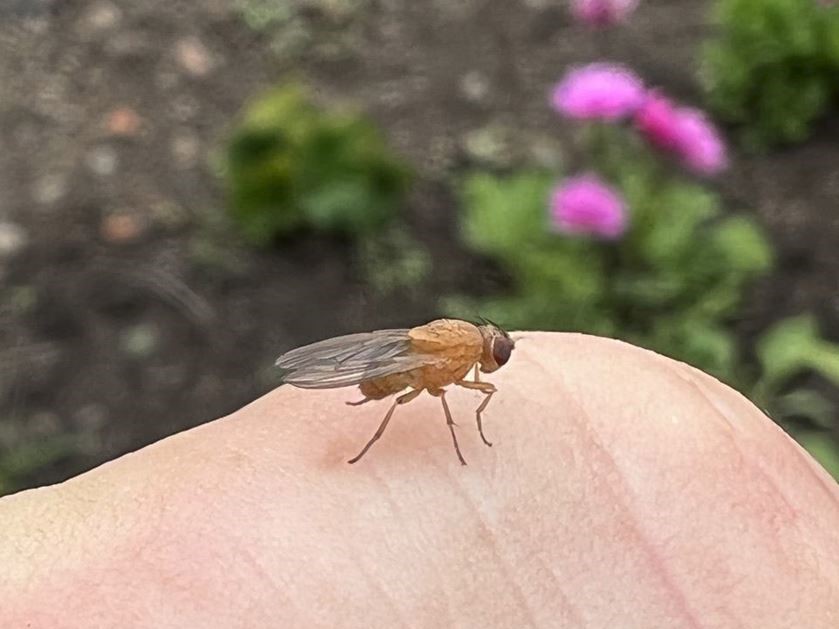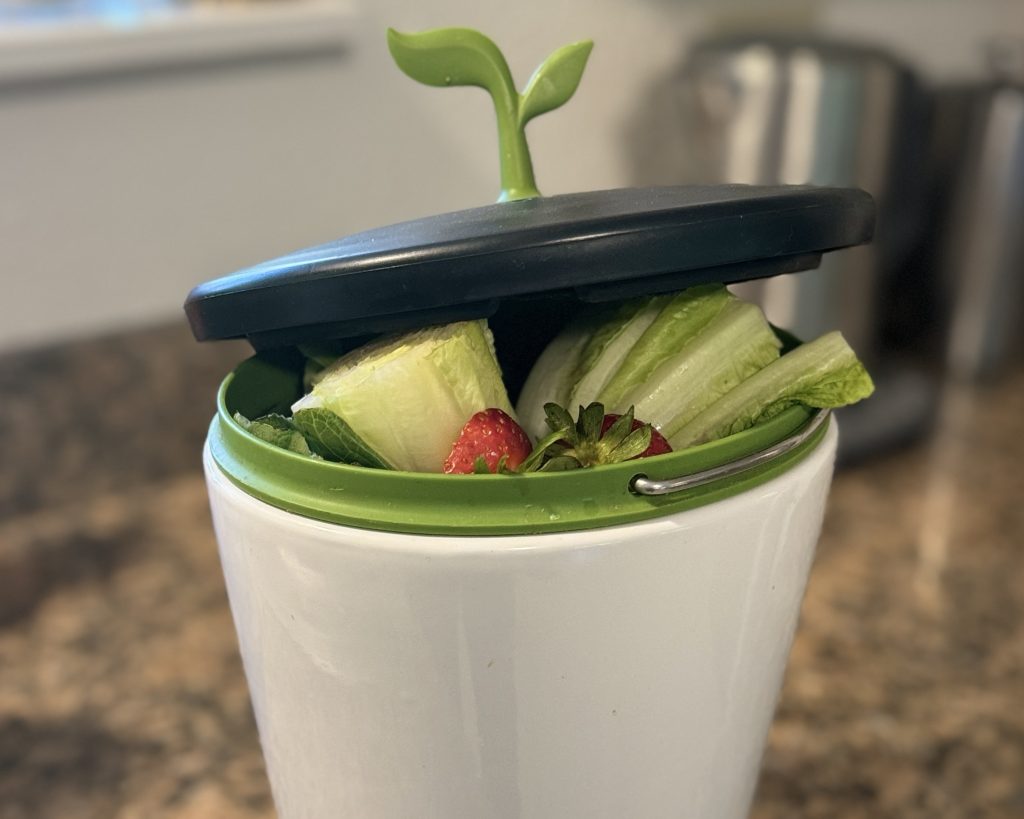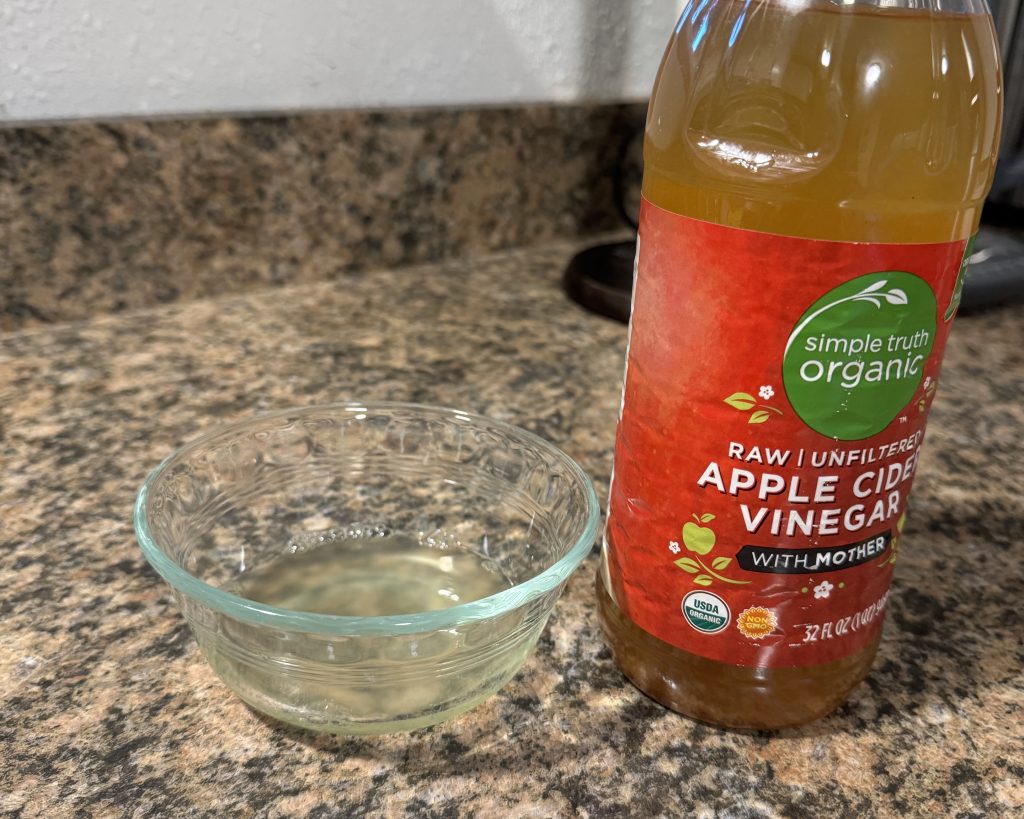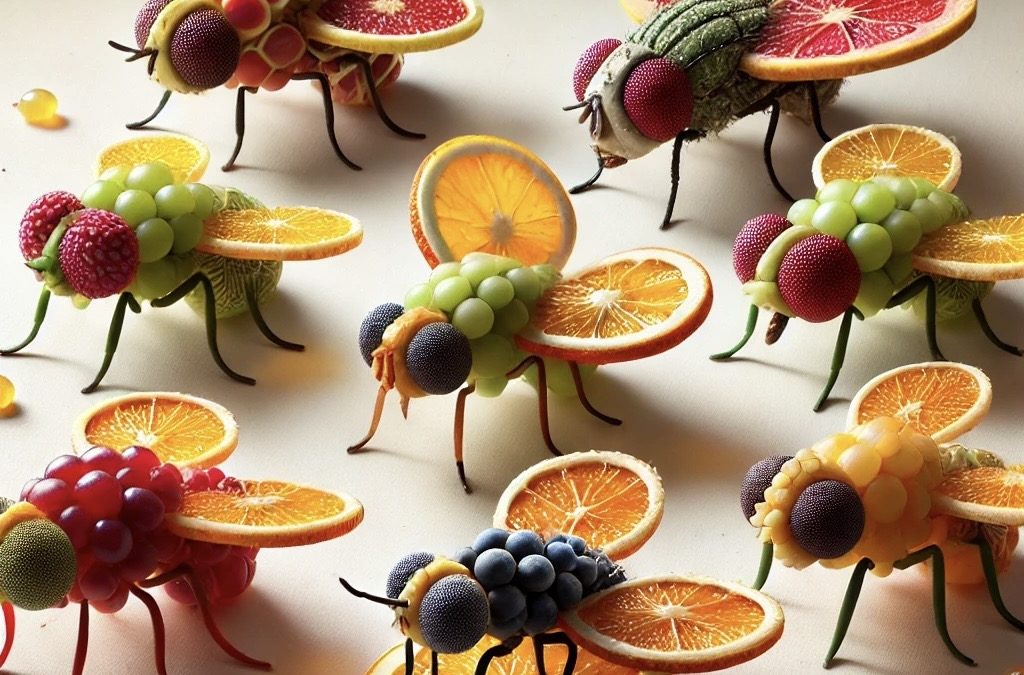Is your house buzzing with more than just the usual mealtime excitement? You ever find yourself doing a swat dance in your kitchen, trying to battle little invaders that love your leftovers more than you do? Before you surrender your kitchen to these tiny pests, let’s figure out how to send them packing.
Key Takeaways:
- Identify Quickly: Learn how to spot signs of fruit fly activity in your kitchen.
- DIY Solutions: Set up simple, effective traps using common household items.
- Preventative Measures: Adopt preventative strategies to keep them from returning.
- Professional Advice: Know when it’s time to seek help from pest control experts.
Understanding Fruit Flies: A Brief Overview
These diminutive critters might just be a few millimeters long, but what they lack in size, they make up for in sheer annoyance. These insects are particularly attracted to ripe, fermenting fruits and vegetables and thrive in moist environments where they can find these food sources. Here are some distinguishing features to help you identify fruit flies:
- Size: They are a small fly, typically about 1/8 inch (3 mm) in length.
- Color: Generally yellow-brown bodies with large eyes that can be red or black, which are quite noticeable.
- Body Structure: Fruit flies have a rounded body shape with distinct segmentation visible upon closer inspection.
- Wings: Their wings are clear but may appear slightly cloudy due to their quick, jerky flying patterns.
These characteristics make fruit flies easy to spot in your kitchen, buzzing around fruit bowls or near garbage storage areas. While they are known for being a common kitchen nuisance, fruit flies can also pose a risk of contaminating food with bacteria as they move from surface to surface. Recognizing these pests early on is key to preventing a full-blown infestation.

Close Encounter: A Fruit Fly Takes a Pause
Checking for Signs of Fruit Flies
To tackle a fruit fly infestation, you first need to confirm their presence. Look for adult flies buzzing around kitchen bins, produce storage areas, and sinks. You might also notice tiny larvae near overripe or decaying fruit, often the another sign of an infestation.
First Step in Fly Control: Find the Source!
One of the most effective ways to tackle a fruit fly infestation is to locate and eliminate their breeding sources. Fruit flies can lay hundreds of eggs, and these can hatch into adults in just about a week, so finding and removing these sources quickly is crucial to preventing further infestation. Here’s how to identify common breeding grounds in your kitchen:
- Overripe or Rotting Produce: Check your fruit bowl and storage areas for any overripe fruits, vegetables, or any decaying organic matter. Fruit flies are attracted to fermenting sugars, so any forgotten produce can quickly become a fruit fly nursery!
- Garbage Bins: One of the most common areas for fruit flies! Ensure that your indoor garbage cans are cleaned regularly and have tight-fitting lids. Any residue or spillage can attract fruit flies and provide a perfect spot for them to lay eggs.
- Compost Bins: I love composting just as much as the next person, but if you allow that bin to sit with old pieces of apple, strawberries, and lettuce…than you will surely get fruit flies! Make sure to empty it regularly and rinse it out each time. Plus after rinsing, give it time to dry before you start filling it up again.
- Recycling Bins: Containers that hold liquids, particularly those that are sweet like soda and juice cans… or perhaps a hoppy beverage… should be rinsed out before recycling. That little bit of residue left in there could definitely be a problem!
- Disposals: Kitchen sinks and garbage disposals can accumulate sludge and food debris that attract fruit flies. Regularly clean these areas with a suitable kitchen drain cleaner to remove any potential breeding material.
- Mops and Cleaning Rags: Wet mops and rags that are not properly dried can harbor fruit flies. Ensure these items are thoroughly wrung out and dried after each use.
- Other Unnoticed Areas: Occasionally, fruit flies find breeding grounds in less obvious places like under refrigerators, inside microwave vents, and under counters where food particles can accumulate unnoticed. Look under that oven, you might just find an old piece of forgotten fruit that got accidentally kicked!
The real game-change in fruit fly management is finding where they’re setting up shop. Without addressing the breeding source, any other measures you take will only provide temporary relief. You might enjoy a brief respite, but before you know it—boom! They’re back with a vengeance You must find that source and remove it before doing anything else. No breeding ground, no new fruit flies. It’s that simple.

Overflowing Bounty: Countertop Compost Bin Full of Kitchen Scraps.
DIY Traps to Get Rid of Fruit Flies
After eliminating the breeding site, you may still notice a few straggling adult flies zipping around the room. The next step is to clear them out! Given their speed and tiny size, using a fly swatter can feel like a losing battle. But don’t worry – there are some highly effective traps you can add to your arsenal to finish the job!
- Commercial Fruit Fly Traps: You’ll find a variety of fruit fly traps at your local home store or online, many of which are quite effective. Look for traps that incorporate a light or scent lure to attract the flies—these features significantly enhance the trap’s effectiveness.
- Vinegar and Dish Soap Trap: Fill a bowl with apple cider vinegar, add a few drops of dish soap, and cover with plastic wrap. Poke small holes in the wrap to let fruit flies enter. You can also do the same thing with a jar and lid. Just make sure to use a nail to poke 6-10 small holes in the lid to allow access for the flies.
- Red Wine Trap: Leave out a bottle with a little red wine and dish soap; the scent attracts flies, and the soap traps them.
- Sticky Trap: Hang sticky fly strips near affected areas to catch flies without using chemicals. These adhesive traps can work well, but they stick to everything so be careful where you put them! (Not recommended for houses with curious cats)
Preventative Measures to Keep Fruit Flies Away
- Store Produce Properly: Keep fruits and vegetables in the refrigerator or well-sealed containers if you can. This is a great way to reduce the chance of spreading flies!
- Wash Produce: If you don’t have space in the fridge for that whole cantaloupe, or if it needs to ripen on the counter, make sure to wash it first. This helps remove any fruit flies or eggs that might be hitching a ride into your home!
- Take out the Garbage: Avoid turning your trash can into a high-stakes game of garbage Jenga. If it’s full, take it out immediately! Also, using a garbage can with a tight-fitting lid will help deter fruit flies from accessing and breeding in your trash.
- Empty that Compost Bin: If you have a counter-top compost bin, make sure you are emptying it and cleaning it regularly. Otherwise, you’re asking for flies.
- Cleanliness is key: Keep your kitchen counters and floors wiped down. If something spills or is dropped, clean it up.
- Maintain Sink Disposals: Keeping it clean and free of gunk/food debris is critical. Make sure you are not overloading the disposal or putting down material that could clog it, such as egg shells, grease, or coffee grounds. Also, don’t chop your fingers off so please be safe and read the manual for maintenance tips.

Simple Solutions: Homemade Fruit Fly Trap
When to Call a Professional
Often, a simple fruit fly infestation can be handled by most people. If all else fails and you’re still hosting fruit fly festivals, it might be time to call in the pros for some help. Sometimes, you need to bring in the big guns to help you reclaim your territory. Good Earth Pest Company is always ready to help you establish peace and order.
Conclusion: Winning the War Against Fruit Flies
By understanding your enemy and taking proactive steps, you can ensure your kitchen remains a no-fly zone. Start with simple traps and maintain cleanliness. Keep an eye out for any signs of a resurgence. If you need backup, don’t hesitate to call in the professionals.
By following this guide, you can enjoy your kitchen without the annoyance of fruit flies turning your ripe produce into their breeding ground. Stay vigilant and proactive, and your fruit fly troubles will soon be a thing of the past.


